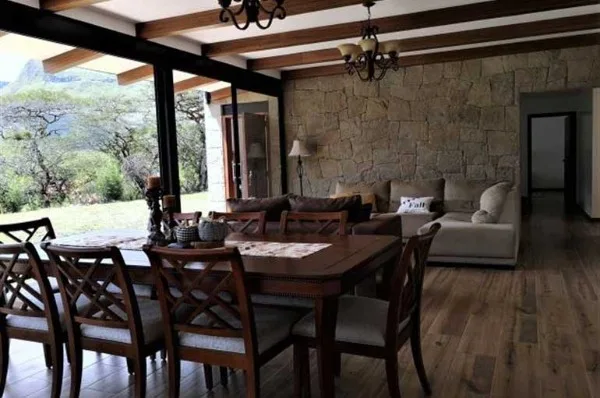Christmas and the Pase Del Niño brought thousands of visitors to Cuenca; Now, it’s time for año nuevo

Carla O’Brien and Joanna Vargha of Cuenca took in the beauty of the Christmas lights at Parque Abdón Calderón.
By Stephen Vargha
Cuenca appeared to have rebounded from the Covid pandemic with its Christmas celebrations and decorations. And Christmas was a huge and welcomed source of revenue for Cuenca businesses.
The city announced that visitors to Cuenca for the Christmas season generated $2,265,246 for the local economy.

A vendor on Calle Luis Cordero hawks his holiday offerings.
“Cuenca was an important meeting point during the Christmas holiday,” the city government said. Figures from the Municipal Tourism Foundation for Cuenca reveal that there were 28,674 visitors, with a hotel occupancy of 42 percent.
At the Cuenca Bus Terminal, the city said 1,057 interprovincial and 969 intraprovincial (within the province) buses were used. In total, 34,995 passengers used the bus service to and from Cuenca.
Cuenca’s Christmas Eve Paseo del Niño parade generated a lot of interest from out-of-town visitors. The religious parade was “attended by thousands of people.”
The Pase Del Niño Viajero started in Cuenca in 1961 when a Christ Child statue that was blessed by the Pope was brought back from Rome. It involves religious elements, but also carries a high cultural value.

A real dog wanted to be part of a Christmas window display on Convención del 45.
Ecuador’s National Institute of Cultural Heritage said, “As a ritual celebration, it is an important moment in the structure of society, since it enables the maintenance and affirmation of collective identity, while allowing union, social cohesion and community solidarity, through reciprocity and redistribution, thus acquiring an integrating power.”
Paseo del Niño, which usually begins at ten o’clock in the morning and lasts throughout the day, had been cancelled in previous years because of the health concerns with the pandemic.
This past Christmas Eve, the procession returned to the streets of Cuenca, from San Sebastián, down Simon Bolivar Street, and ending in San Blas.
Cuenca Mayor Pedro Palacios stressed that the figures reveal that having the Christmas celebrations and decorations being geared to families was huge asset for the city.
“Being a festivity dedicated to family union, our Canton remains the preferred destination for national tourists,” said the mayor. “On this occasion, among the main attractions was Paseo del Niño.”

The recently renovated Mirador de Turi is a Christmas beacon for Cuenca.
Though not mentioned by the mayor, the December 4 lighting ceremony of Cuenca’s giant Christmas tree in Parque Miraflores was a major draw. At a height of 41-meters and with 22,000 lights, Cuenca’s Christmas tree is the tallest in Ecuador. It was extended by four meters (13 feet) this year to top the recent competition from other cities in Ecuador vying to be the tallest in the country.
City officials had been concerned about the lighting ceremony due to a group of street vendors who threatened to disrupt the Sunday event at the park. The group had shut down tram service on the Friday before the ceremony. They were protesting the mayor’s office decision that the area around the Christmas tree should be free of commercial activity.

Monigotes are very popular on Christmas Eve. They are burned to get rid of all of the bad from the old year.
“This will be place where families can enjoy the holiday season in peace, without commercial distraction,” the city spokeswoman said. “There are many places in the city dedicated to commercial activity where vendors are free to sell their merchandise.”
Police warned the protesters that they would be arrested if they continued to interfere with the public transportation system. Service resumed after about an hour of protesting.
The City of Cuenca deployed a contingent of people for the religious Christmas Eve event. The Citizen Guard of Cuenca dispersed 170 troops, with 100 of them specifically assigned to Paseo del Niño. The others covered the usual tourist areas such as Parque Abdón Calderón and the surrounding streets as well as the markets, including the Flowers Market. Because of its popularity, areas in El Barranco del Rio Tomebamba were patrolled by the Citizen Guard, too.
In Tuesday’s announcement by the city, it mentioned the workers of the Municipal Cleaning Company of Cuenca (EMAC-EP) which cleaned the streets after the thousands had left the parade.
According to data from the Mobility Company (EMOV EP), on Christmas, there were two traffic accidents in the Cuenca canton, with two people injured. Four people were arrested for driving while intoxicated on Christmas.
Simultaneously, vehicle technical inspection operations were carried out on the inter- and intra-cantonal transport buses to make sure the drivers were sober.
New Year’s Eve is one of the biggest celebrations of the year. Although the burning of Monigotes (a paper or sawdust doll) are practiced all over Ecuador, Cuenca lays claim to being the tradition’s epicenter.
It will be a loud night with fireworks everywhere. And it will be a busy for officials and law enforcement which will be out in force.
_____________________
Photos by Stephen Vargha
Stephen Vargha’s new book about Cuenca, “Una Nueva Vida – A New Life” is available at Amazon in digital and paperback formats.


















